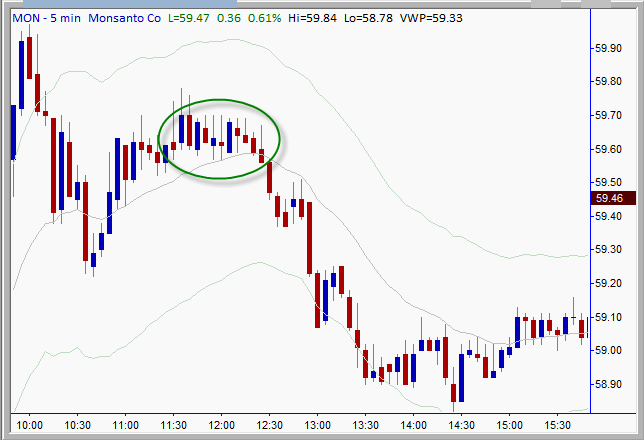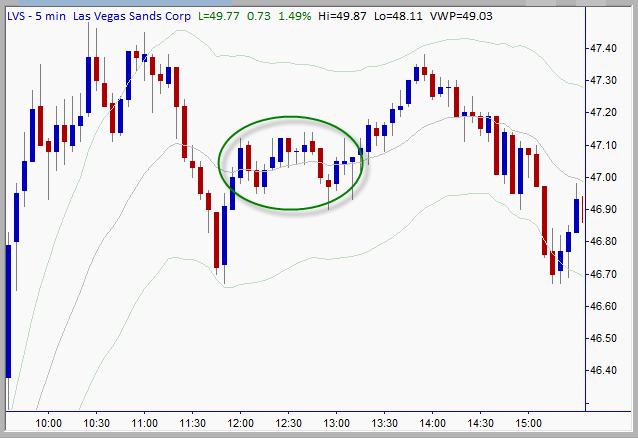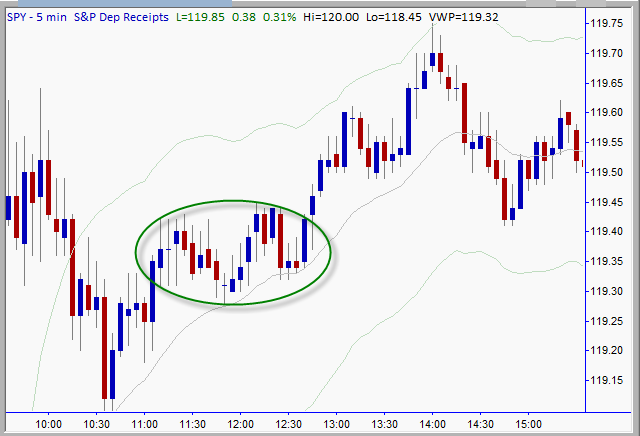It is important to know what kind of trader you are. I’m not a scalper, I hate to buy or sell in front of levels, I don’t like to scale into trades, etc… What I do best is to find trending markets, identify inflection points in those trends, and ride them until the end. As a swing trader, I have another skill, which I haven’t quite figured out how to transfer to intraday trading perfectly yet: I’m very good at picking off overextended spots in trends and fading them with very little risk. Regardless, it’s all the same thing which boils down to understanding trend structure and trading within that structure. Trading ranges are kryptonite for me and trading in ranges is at best a breakeven proposition for me…. and trading in a range if I actually think it’s a trend?! That usually turns into a disaster of truly impressive proportions.
I have had a rule for many years that I wont trade when the S&P futures have a number of 1 minute bars in a row that are 2-3 ticks from high to low. (On the SPY, this corresponds to 1 minute bars that are between .05 – .08.) As I say over and over to my mentees, every edge we have as technical traders comes from an imbalance of buyers and sellers. When a market is in equilibrium, randomness dominates and we have no business assuming risk in that kind of environment, but this type of very small range environment is rare and is usually limited to pre-holiday markets. I have recently added another set of rules to keep me out of the kinds of crummy trading ranges that show up most days in most stocks.
In practice, the rule says I simply avoid trading in markets (or stocks) that have many small, overlapping bars near the moving average. (If I were coding this into a filter it would be something like three out of the last five bars have a very small range.) Visually, these bars will almost always have large shadows (wicks or tails) relative to their tiny bodies, which reinforces the fact that trading breakouts of these kinds of ranges tends to also be painful. If I see this pattern, I stop looking at the stock until it makes a good move away from the moving average because there is clearly no trend. If I am in a position in a stock that turns into this pattern, I will either get out or only hold if I have taken partial profits and the worst thing that can happen is a break-even trade. The one thing I absolutely will not do is to initiate a trade in this environment… and that has saved me some spare change over the past few months. This might seem so simple that it’s stupid, but look back over your last 50 trades and see what would have happened if you just avoided this kind of market:




One Comment on “A Little Thing That Has Made a Big Difference”
been there ( am still there?)